In the 1930s and 1940s, bus travel was the common way to travel to school, around town and to other parts of the country. Advertisements and the streamlined design of buses in the 40s added to the appeal. Bus riding hit its peak during World War II when car production nearly ceased and gasoline was rationed. (Continued below ad)
The photographs below from the Alabama Department of Archives and History and Birmingham Public Library take us back in time. What is the longest trip you ever took by bus?
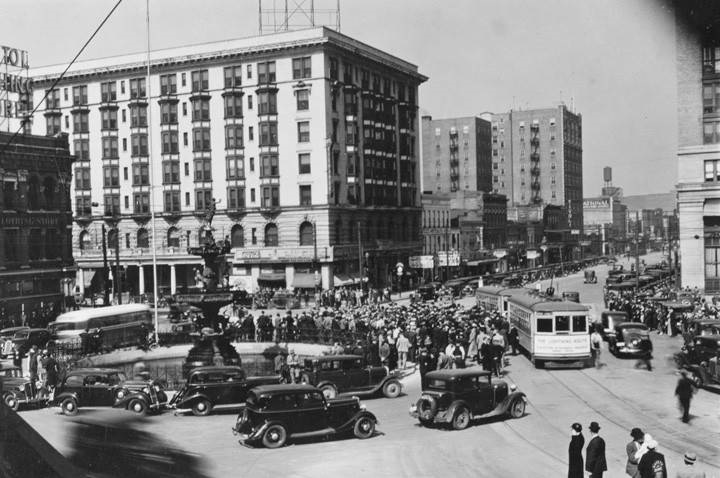 Copy photograph of the last streetcar ride in downtown Montgomery, Alabama, taken just before the city switched to bus service March 8, 1936 by photographer John E. Scott, Montgomery, Alabama Q81754
Copy photograph of the last streetcar ride in downtown Montgomery, Alabama, taken just before the city switched to bus service March 8, 1936 by photographer John E. Scott, Montgomery, Alabama Q81754
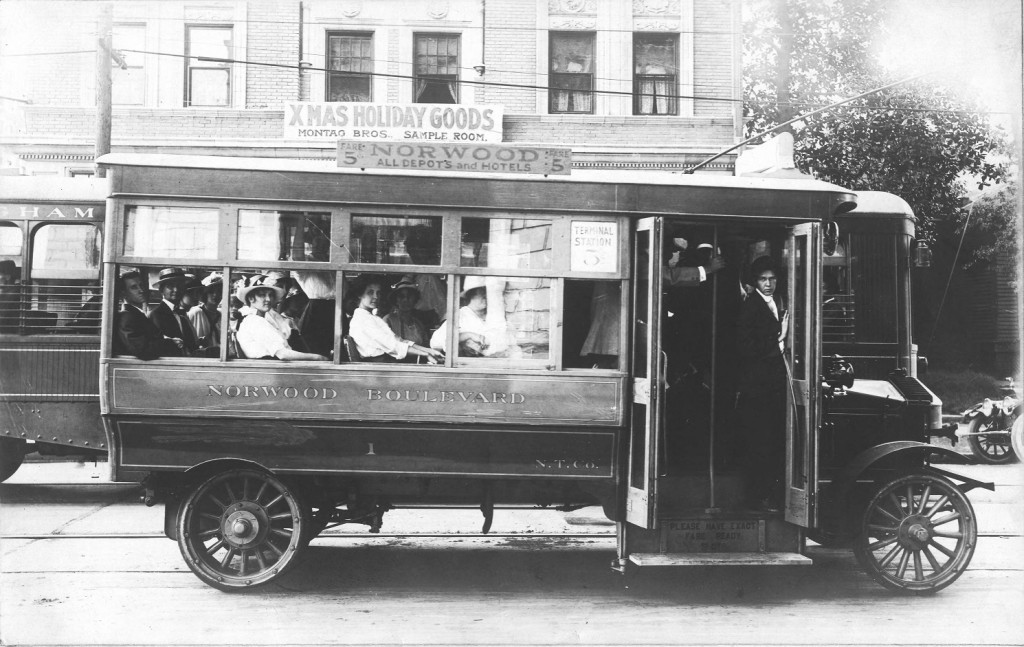 Norwood Boulevard bus of the Norwood Transportation Company, Birmingham, Alabama ca. 1910 (Birmingham Public Library)
Norwood Boulevard bus of the Norwood Transportation Company, Birmingham, Alabama ca. 1910 (Birmingham Public Library)
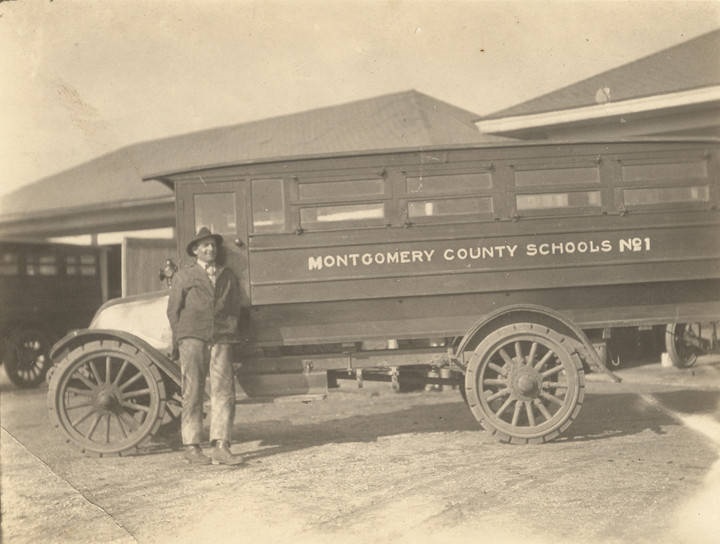 Man standing in front of a Montgomery County school bus in Montgomery, Alabama Picture caption: “Bus #1 was completing seven years of hard running and is still working a fine record” ca. 1920 Q3875
Man standing in front of a Montgomery County school bus in Montgomery, Alabama Picture caption: “Bus #1 was completing seven years of hard running and is still working a fine record” ca. 1920 Q3875
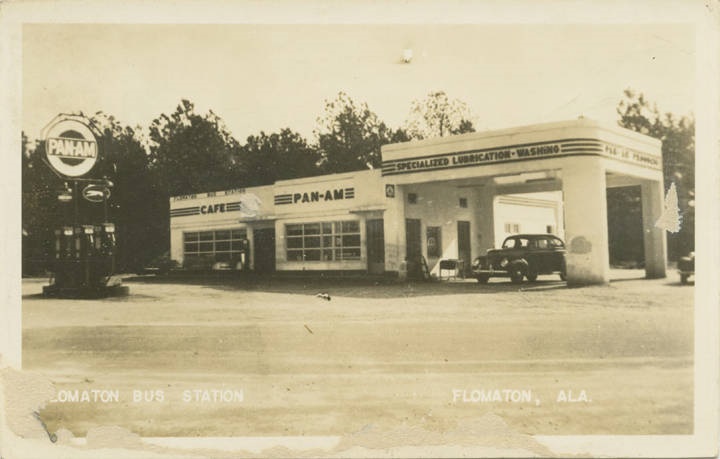 Flomaton Bus Station, Flomaton, Ala postcard ca. 1940-1949 Q70488
Flomaton Bus Station, Flomaton, Ala postcard ca. 1940-1949 Q70488
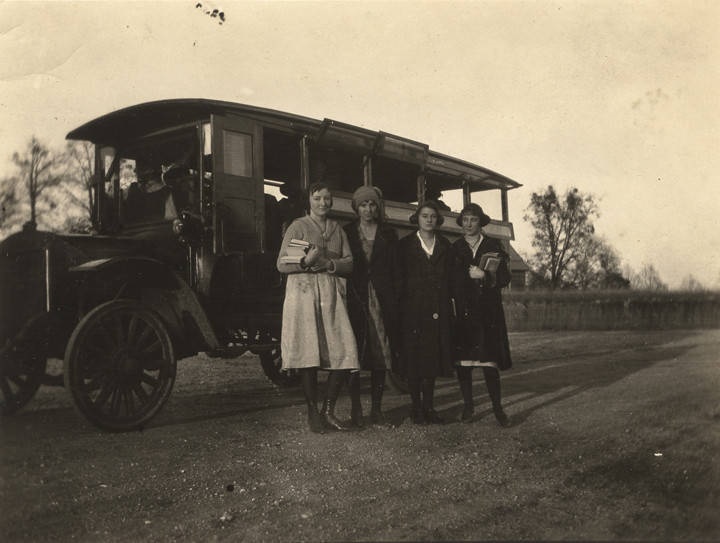 Getting off the bus at their house twelve miles from Ramer High School where they go every day – four female students in Montgomery County, Alabama standing by a school bus ca. 1920 Q3898
Getting off the bus at their house twelve miles from Ramer High School where they go every day – four female students in Montgomery County, Alabama standing by a school bus ca. 1920 Q3898
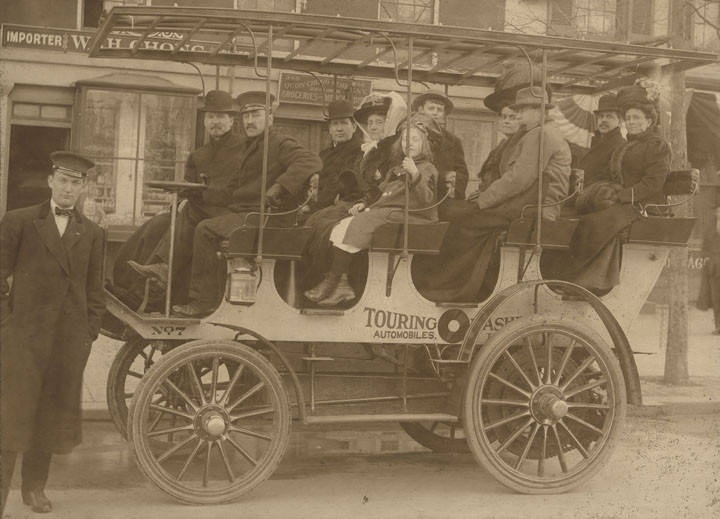 Passengers on a small bus in downtown Evergreen, Alabama ca. 1890-1909 from Frank Leslie Riley photographs Q8540
Passengers on a small bus in downtown Evergreen, Alabama ca. 1890-1909 from Frank Leslie Riley photographs Q8540
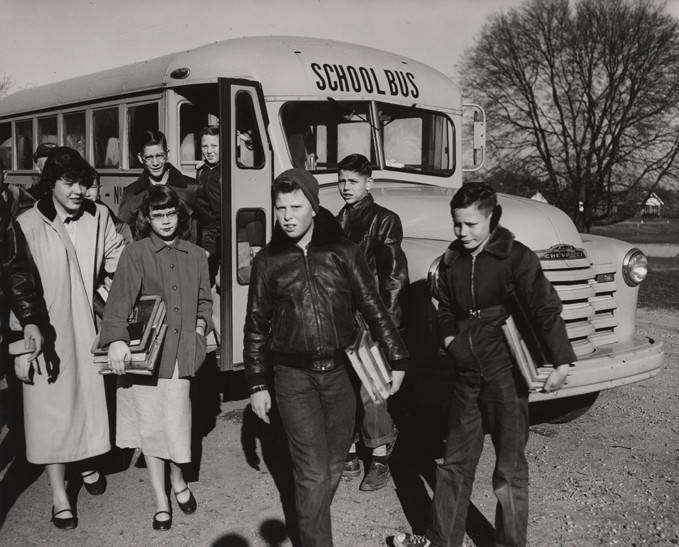 Students getting off a school bus in Alabama Pierce Laurens photographer, Montgomery, Alabama ca. 1940-1959 Q40553
Students getting off a school bus in Alabama Pierce Laurens photographer, Montgomery, Alabama ca. 1940-1959 Q40553
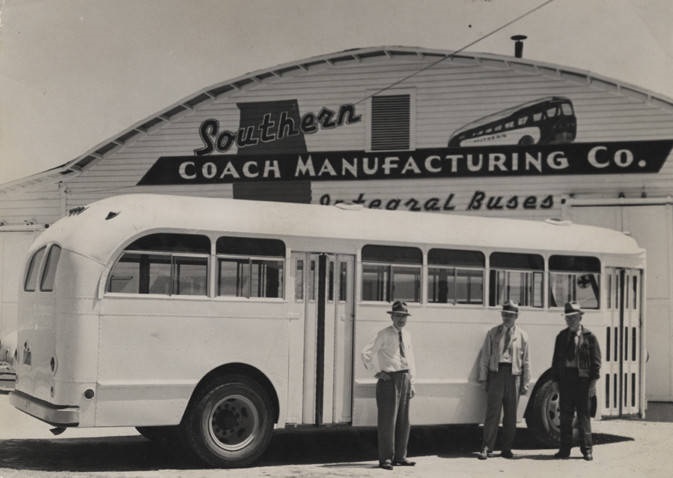 Three men standing in front of a bus built by (and parked at) the Southern Coach Manufacturing Company in Evergreen, Alabama photographer Clayton Albert, Birmingham, Alabama ca. 1940-1949 Q36704
Three men standing in front of a bus built by (and parked at) the Southern Coach Manufacturing Company in Evergreen, Alabama photographer Clayton Albert, Birmingham, Alabama ca. 1940-1949 Q36704
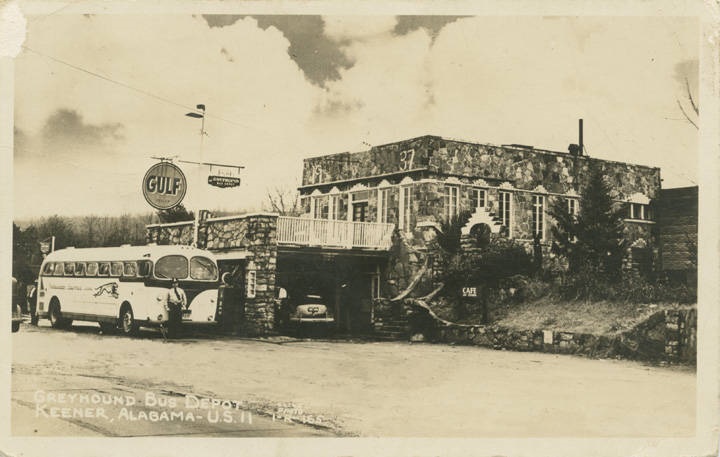 Greyhound Bus Depot, Keener, Alabama – U.S. 11 – the postmark date on the back of the postcard is June 2, 1946 Q70394
Greyhound Bus Depot, Keener, Alabama – U.S. 11 – the postmark date on the back of the postcard is June 2, 1946 Q70394
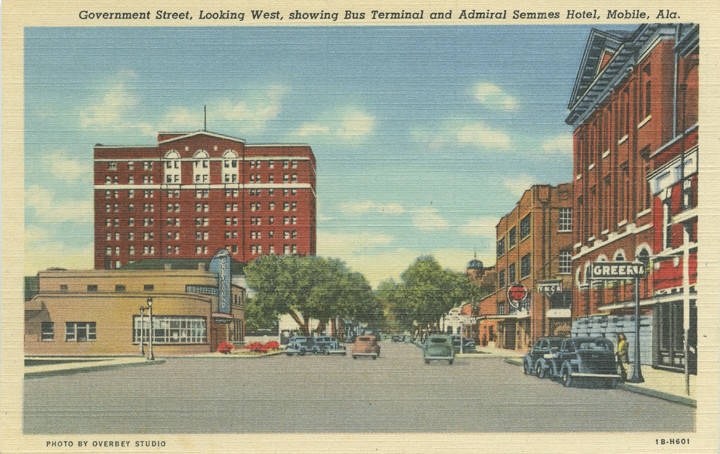 Government Street, Looking West, Showing Bus Terminal and Admiral Semmes Hotel, Mobile, Ala postcard ca. 1930-1949 – Q54813 – Admiral Semmes Hotel and Bus Terminal are both new in the picture and modern buildings faced Government Street which was a part of the old Spanish Trail. Both buildings are located two blocks of the entrance of Bankhead Tunnel, which passes under Mobile River.
Government Street, Looking West, Showing Bus Terminal and Admiral Semmes Hotel, Mobile, Ala postcard ca. 1930-1949 – Q54813 – Admiral Semmes Hotel and Bus Terminal are both new in the picture and modern buildings faced Government Street which was a part of the old Spanish Trail. Both buildings are located two blocks of the entrance of Bankhead Tunnel, which passes under Mobile River.
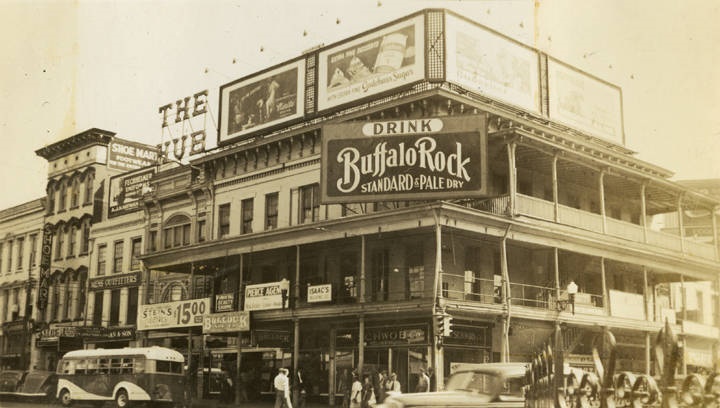 Winter Building at the corner of Dexter Avenue and Court Street in Montgomery, Alabama with bus October 1938 from William P. Screws family scrapbooks Q49291 Several businesses are visible, including Shoe Mart, A. J. Kaufman & Son, The Hub, Stein’s Clothes, Murray Hill Beauty Shoppe, Bullock Shoe Co., Pierce Agency, Isaac’s Tailoring Co., and The Schwob Co.
Winter Building at the corner of Dexter Avenue and Court Street in Montgomery, Alabama with bus October 1938 from William P. Screws family scrapbooks Q49291 Several businesses are visible, including Shoe Mart, A. J. Kaufman & Son, The Hub, Stein’s Clothes, Murray Hill Beauty Shoppe, Bullock Shoe Co., Pierce Agency, Isaac’s Tailoring Co., and The Schwob Co.
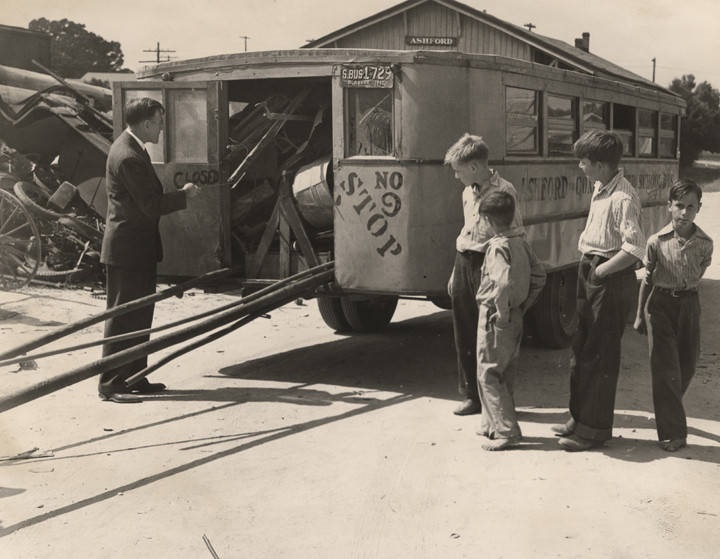 School bus in Ashford, Alabama, loaded with scrap metal ca. 1941-1945. The metal was collected for a salvage drive during WW II Q7772
School bus in Ashford, Alabama, loaded with scrap metal ca. 1941-1945. The metal was collected for a salvage drive during WW II Q7772
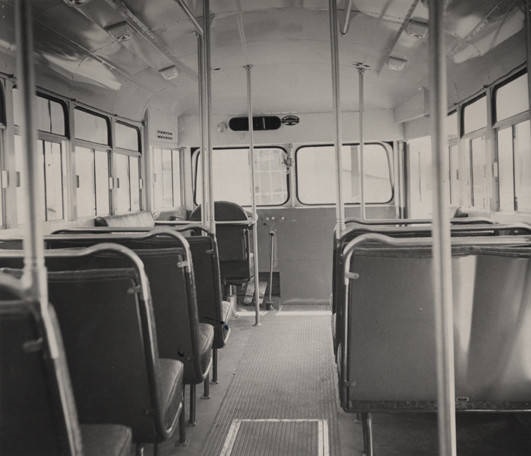 Interior of a bus (facing front) built by the Southern Coach Manufacturing Company in Evergreen, Alabama. ca. 1940-1949 photographer Clayton Albert, Birmingham, Alabama Q36707
Interior of a bus (facing front) built by the Southern Coach Manufacturing Company in Evergreen, Alabama. ca. 1940-1949 photographer Clayton Albert, Birmingham, Alabama Q36707
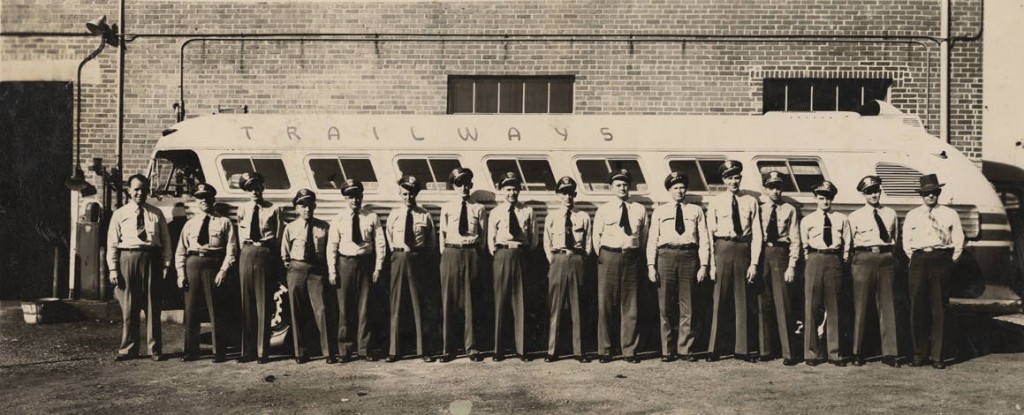 Drivers standing in front of a Trailways bus at a station, probably in Anniston, Alabama. ca. 1950-1959 by Anniston Studio, Anniston, Alabama Q55912 Left to right: Joe Johnston, A. L. Kircus, Barbers, Rudolph R. Givens, Pressley, Roy Webb, L. L. O. Kelly, Schropshire, Jack Cosper, H. D. Pesnell, V. M. Baker, Watson, A. L. McDaniel, R. H. Hester, and Robert Bridges
Drivers standing in front of a Trailways bus at a station, probably in Anniston, Alabama. ca. 1950-1959 by Anniston Studio, Anniston, Alabama Q55912 Left to right: Joe Johnston, A. L. Kircus, Barbers, Rudolph R. Givens, Pressley, Roy Webb, L. L. O. Kelly, Schropshire, Jack Cosper, H. D. Pesnell, V. M. Baker, Watson, A. L. McDaniel, R. H. Hester, and Robert Bridges
Faith and Courage: A Novel of Colonial America (Tapestry of Love) (Volume 2)
Inspired by real people and actual events, the family saga of colonial America continues with Ambrose Dixon’s family. Faith and Courage presents the religious persecution of Quakers in Pre-Revolutionary War days of America intertwined with a love story.
In this action-packed novel, George Willson witnesses the execution of King Charles II and is forced to leave the woman he loves to witch hunters in 17th century England as he flees to his sister, Mary, and her husband Ambrose Dixon’s home in Colonial American. Ridden with guilt over difficult decisions he made to survive, George Willson and the Dixon’s embrace the Quaker faith which creates more problems for their survival in the New World.


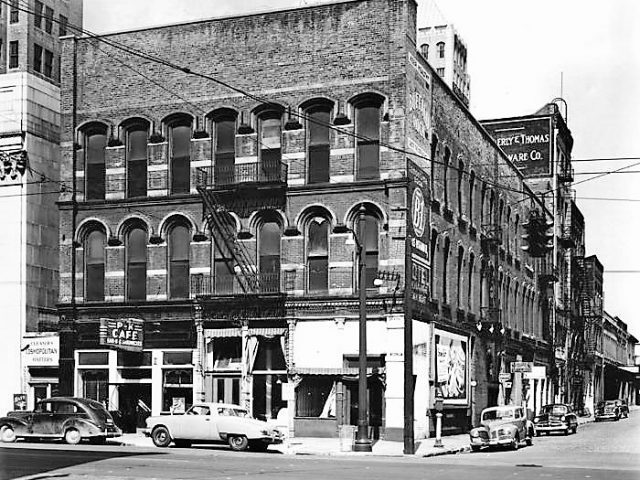

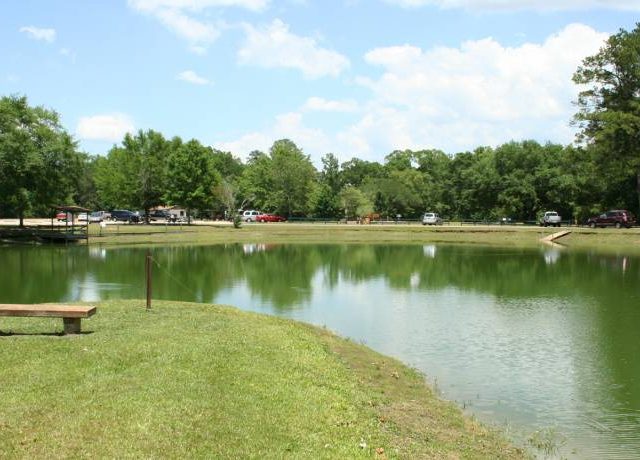
Took the Miss Ala, from Fayette to Birmingham to see you relatives many times as a kid. Grey Hound once in a while. Birmingham hub was really a busy place.
I remember them. The MissAla Stages. They used the old Trailways depot at 4th Ave. No. & 19th St. I worked in the General Electric facility in Irondale in the early 60s. We shipped out parts all over the southeast. If you wanted it fast in those days, it was shipped by bus. Practically everything going anywhere between Jasper, Ala. and Tupelo Miss., went bus freight on MissAla.
the bus in this picture looks like the kind my dad rode in the early 40’s to school in Grand Island, NY
My father ( and his family I think) drove the one in the Ridge Grove community in Dudleyville, Alabama in the early 1930s
I came to Alabama by bus in 1983 & have been ever since
My longest bus trip was between Mobile & San Francisco while in the Navy (1948-49). I rode the school bus between Stapleton & Bay Minette 1942-48; one year my cousin Herman Dean drove the bus while he was a senior (and before losing his life in Italy during WWII).
I loved the streetcars. Thank Heaven Birmingham kept them until 1953.